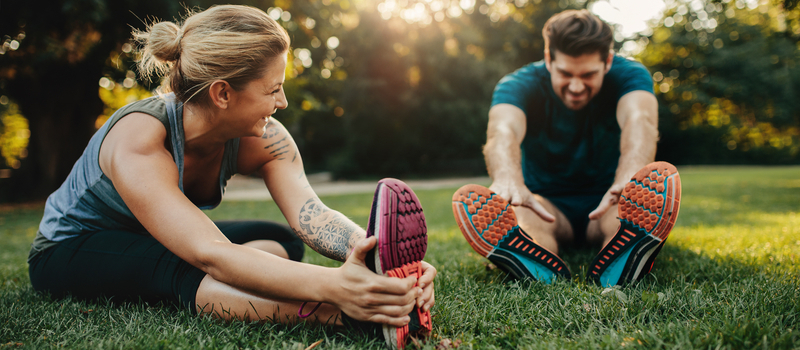Benefits of stretching
Published July 12, 2022

Why is stretching good for you?
Stretching used to be seen as something you did as part of your exercise warm-up and cool down. Now, physical therapists recommend stretching as part of your exercise routine to help promote muscle flexibility and joint health and help combat the effects of a sedentary lifestyle.
What happens when you stretch?
When you stretch, the muscle fibre is pulled out to its full length. The connective tissue takes up the remaining slack helping realign any disorganised fibres in the muscle, helping rehabilitate scarred tissue back to health.
The change in length of the muscle from stretching also sends signals to the spine, triggering resistance to the change in muscle length by causing the stretched muscle to contract. The more sudden the change in muscle length, the stronger the muscle contractions will be. These contractions help maintain muscle tone and to protect the body from injury.
Different types of stretching
There are two common types of stretching:
- Dynamic — Dynamic stretching involves a gradual transition from one body position to another, where muscles go through a range of motion. These are often done before other forms of exercise. Stretching by moving through your range of motion raises your heart rate and increases blood flow to your muscles, allowing them to warm up properly. Some examples of dynamic stretching include leg swings, torso twists and arm circles.
- Static stretching — Static stretching involves slowly moving a muscle to the end of its range of motion and then holding the position for a period of time.
Stretching increases flexibility
Stretching helps maintain a healthy range of motion in your joints, keeping them strong, and flexible; preventing muscles shortening and becoming tight. Keeping your muscles stretched and supple regularly, keeps them ready for anything, helping prevent damage during more strenuous activity such as playing sport.
Sedentary activity, such as sitting in a chair for hours at work, can lead to tight muscles. This tightness can make it harder to perform certain activities such as extending your leg or straighten your knee all the way, impacting your walking. Stretching your legs during the day can help keep the muscle lean and flexible if you’re in a sitting position for much of the day.
Stretching and posture
Stretching has been shown in multiple studies to improve posture and help manage pain. Shoulder, neck, mid back pain, and low back pain may be relieved with exercise programs focused on stretching benefitting students and people engaged in sedentary work.
How often should I stretch?
According to the American College of Sports Medicine (ACSM) healthy adults should do flexibility exercises (stretches, yoga, or tai chi) for all major muscle-tendon groups—neck, shoulders, chest, trunk, lower back, hips, legs, and ankles—at least two to three times a week.
When stretching, aim to spend a total of 60 seconds on each stretching exercise. So, if you can hold a particular stretch for 15 seconds, repeating it three more times would be ideal. If you can hold the stretch for 20 seconds, two more repetitions would do the trick. When stretching hold the stretch but don’t bounce, this can cause injury. You should feel tension during a stretch but not pain. If you do feel pain, stop stretching and speak to your healthcare practitioner. Stretching is no longer just seen as part of your daily exercise warm-up or cool down; it is now an integral part of keeping your muscles flexible and helping you maintain range of motion as you age.
MAT-AU-2201723
Learn about which Nature's Own product may be appropriate for you.
SEE THE PRODUCTS HERE







